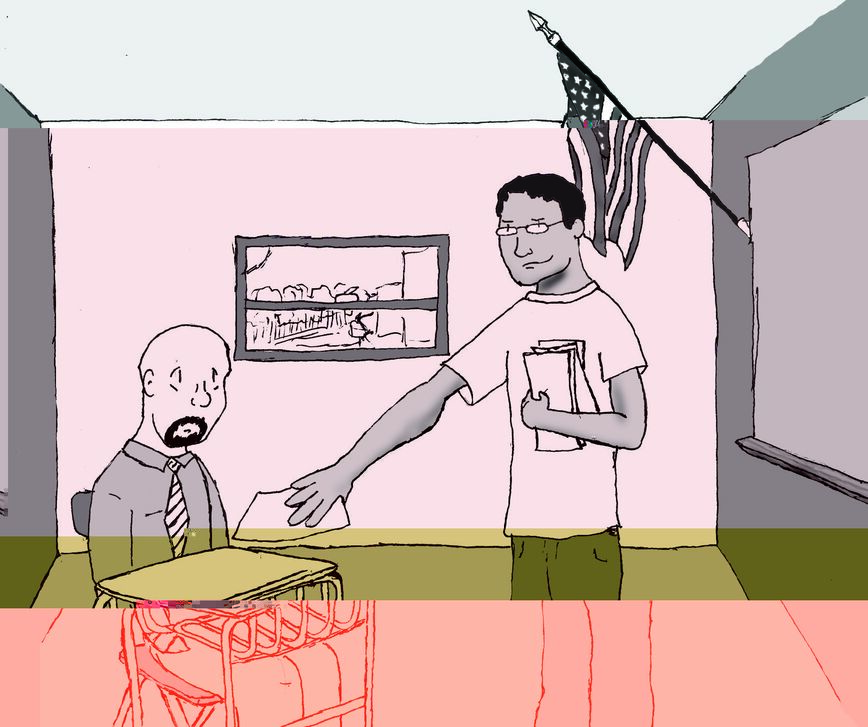Evaluating teachers from the inside out
Emphasis on student feedback would diversify teacher assessments
In writing a movie review, a reviewer's first priority is always to see the movie in question: Watching the film is the only way to judge the quality of the acting, shots and choice of music. But the Maryland school system is writing the review without even entering the theater – that is, conducting evaluations of teachers but barely looking into what actually goes on in the classroom.
Maryland recently developed a renewed focus on teacher quality when state Schools Superintendent Nancy Grasmick proposed that 50 percent of teacher evaluations in Maryland be linked to "student progress," a term that encompasses Maryland School Assessment (MSA) and High School Assessment (HSA) scores as well as portfolios of student work. Left entirely out of the equation are the only people with firsthand knowledge of a teacher's quality: their students.
The current system for evaluation in Montgomery County is better than the new proposal for the state, but not by much. According to Ray Frappolli, director of the Department of Performance Evaluation and Compliance in MCPS, teachers are currently evaluated based on six different standards concerning professionalism, subject knowledge, professional development, commitment and student progress. Their evaluations consist of in-class observations by supervisors, student test data, and any complaints or positive comments from parents. Still, none of these techniques directly involves student opinion, and Grasmick's proposed changes would make the system focused less on classroom practices and much more on standardized tests.
Standardized tests can be a great measure of how much informational knowledge students are being taught, but only students can determine if they are really being educated. Even mediocre teachers can drill their students to outsmart an HSA question, but there is a great difference between what students remember the day of a test and what they remember for the rest of their lives. It is important to place value on test scores, but how kids feel about their classroom experience is not irrelevant. Rather, the influence of teachers on their students can shape kids' entire learning careers, and this influence is what matters in our attempt to build a better-educated society.
That is where student evaluations of teachers come in. Used commonly in universities for instructors' own benefit, the evaluations should be implemented in Maryland high schools in the form of surveys conducted by resource teachers or administrators. They should then be factored in with student progress to determine a teacher's effectiveness rating to help decide which teachers deserve more merit than their students' test scores suggest, or which are slipping by on sub-par teaching tactics.Some worry that student evaluations could turn into popularity contests and that students would give the best marks to teachers that give higher grades. According to Dr. Kenneth Peterson, a professor at Portland State University and former president of the Consortium for Research on Educational Accountability and Teacher Evaluation, this is not the case. Studies conducted at all levels of grade school education have shown that students can very accurately measure a teacher's ability to engage students and run an orderly class, Peterson said.
It is vital that student evaluations be used to measure these factors, because test scores usually cannot. Imagine: One teacher is educating a group of disadvantaged students with energy and dedication, inspiring them to overcome academic challenges, but her already-behind students are not improving by leaps and bounds on standardized tests. Her "student progress" rating cannot be compared to that of an Advanced Placement teacher who shows endless videos and gives busy work to a class full of privileged students while the students use their already-honed work-study habits to improve their own work and test scores throughout the year. According to Peterson, research has shown overwhelmingly that where students start academically at the beginning of a year determines their degree of progress that year. Student evaluations are the method that best fills this progress gap by demonstrating the effect instructors have on the people they teach.
It would be easy to get caught up in the bureaucratic issues surrounding student evaluations, but it is the principle that's important: Teaching is an interactive process, and as one of the two parties involved, students need a voice in its execution. By empowering students to have a say in their education and assessing teachers based on the messages they communicate to their pupils, Maryland would ensure that students learn in the short term and love to learn as long as they live.
Jewel Galbraith. More »
Comments
No comments.
Please ensure that all comments are mature and responsible; they will go through moderation.
